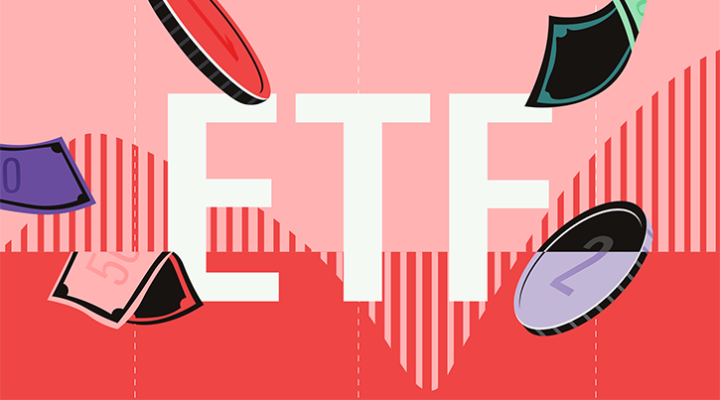
Is more active management the future of ETFs? Certainly, active ETFs are increasing in popularity and in the US, growth has been explosive in recent years. In Europe, they are still a niche product, but the launch of new active passive funds is steadily increasing.
What Are Active ETFs?
Actively managed ETFs are exchange traded funds that invest in a portfolio of stocks or bonds chosen by a manager and differ from traditional ETFs that passively replicate an index based on predetermined rules. In essence, they seek to outperform the benchmark through security selection or sector allocation.
Jason Xavier, head of EMEA ETF Capital Markets at Franklin Templeton, wrote that “the whiff of a new era for investing is in the air, one that will bring active management back into vogue”. More recently, Ryan Jackson, Morningstar's US analyst, said that “seemingly overnight, active ETFs ascended from obscurity to ubiquity. Their rise stems from a mixture of legislation, product development, and market events and trends that pulled their unique advantages into focus.”
Active ETFs in Europe
According to Morningstar data, active ETFs raised €6.7 billion in 2023 (£5.7 billion), up from €2.4 billion in 2022. Assets reached €28.9 billion (€20.1 billion in 2022). They represent 1.8% of the assets invested in exchange traded funds in Europe (it was 1.5% the previous year).
Initially, the development of active ETFs took place mainly within bond strategies. Pimco US Dollar Short Maturity ETF and Pimco Euro Short Maturity ETF are two examples of such products. But in recent years, expansion has been through equity strategies. Among the most recent debuts are three JPMorgan asset management products in US large-cap equities, which give investors access to the core, value and growth portfolios of top portfolio managers.
"Established players such as JPMorgan - which has a market share of close to 44% in this segment - and Fidelity have built their ETF range mainly with active ETFs," explains José Garcia-Zarate, associate director for passive strategies research at Morningstar in Europe. “In addition, new players entering the ETF market, such as Robeco, also seem to be heading towards this segment. This trend could mean that the market for traditional passive strategies is rather saturated, and it is not easy for those entering now to make their way in and gain significant positions."
The Rise of Active ETFs Worldwide
According to Morningstar's latest Global Fund Flow Report,growth rates of active ETFs worldwide outpaced those of traditional index funds in 2023: +37% versus +8%, on an organic basis.
Actively managed equity ETFs alone grew 48% on an organic basis last year. The category has been booming since 2020 and shows few signs of slowing down. The lion's share is held by the US: out of global assets of $342 billion, $287 billion are attributable to the US market.
That the phenomenon has now gone global, however, is shown by the fact that active non-US domiciled ETFs grew by 28% last year.
The Rise of Active ETFs in the US
Morningstar also calculated that, in each year since 2018, active ETFs have had net flows of at least $25 billion and experienced an organic growth rate of more than 30% in the United States.
Investors' rush towards these instruments heavily penalised traditional active funds, and for the first time in 2023, the assets of passive strategies exceeded - albeit slightly - those of active ones ($13,293 billion versus $13,234 billion).
More Active ETFs and Less Strategic Beta
Active ETFs are becoming the benchmark for investors seeking to generate value with exchange traded funds at the expense of smart strategic beta. The industry has realised this and responded with the launch of numerous such products, in and outside the US.
"Fewer ETF issuers are incentivised to launch new and innovative funds in the now-mature strategic-beta ETF market. Downward fee pressure is pushing smaller providers out of the space, while higher-priced active or alternative ETFs provide new and potentially lucrative opportunities for emerging ETF issuers," says Mo'ath Almahasneh, associate manager research analyst at Morningstar.
The analyst is convinced that this trend will continue in 2024, further reducing the number of strategic beta ETF launches and possibly increasing closures.
Will ETFs also Become Increasingly Active in Europe?
According to experts, it is not only the market saturation of traditional passive strategies and the consequent search for new ways to enter the ETF industry that is driving the growth of these instruments. “The growing popularity of the ETF 'wrapper' as an investment vehicle is evident,” Garcia-Zarate says. "Although ETFs have traditionally been identified as passive funds, the reality is that they are just vehicles and there is no barrier to the distribution of active strategies."
The Advantages of Active ETFs
Compared to a mutual fund, an active ETF has several advantages, including cost, because all other things being equal, ETFs tend to be cheaper. Other advantages are real-time stock market trading and transparency (many of these instruments make their portfolio positions available on a daily basis).
But beware – active ETFs do not appear to be perfect substitutes for traditional actively managed funds. "Our first analyses of this market reveal that the active strategies typically sold in ETFs do not exhibit the full flexibility of a traditional active fund," Garcia-Zarate clarifies. "Yes, they are active, but to a certain extent because they have to keep the tracking error against the benchmark within acceptable levels and thus contain turnover and management costs."












.jpg)
















